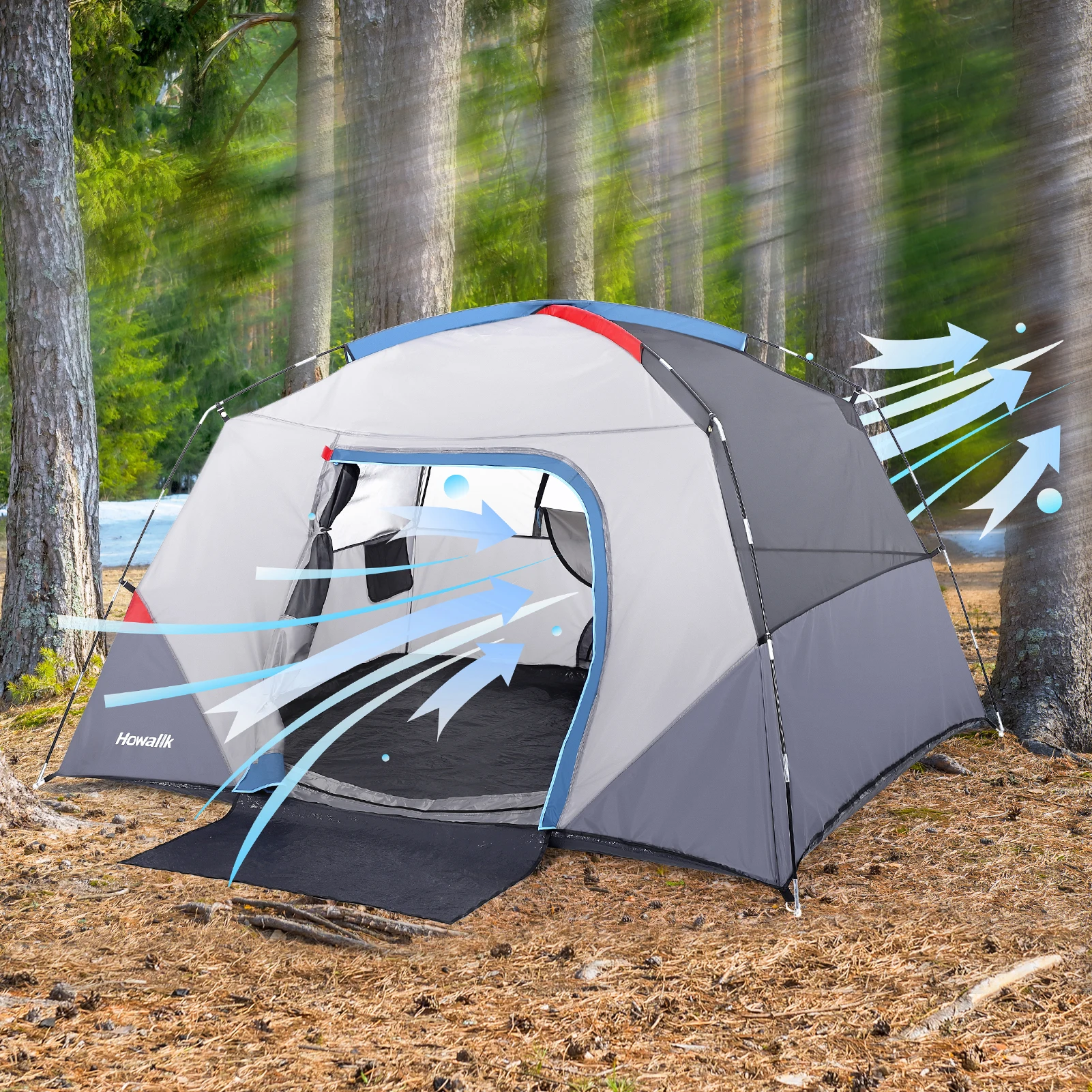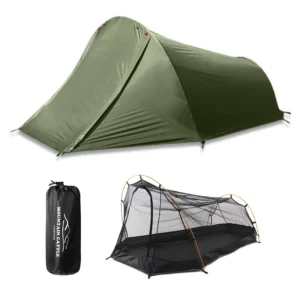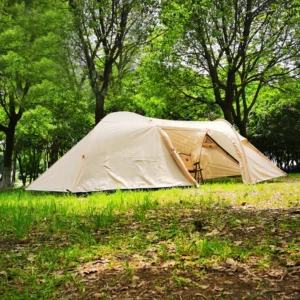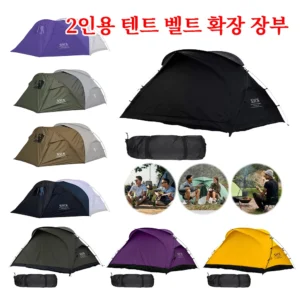Introduction: Why Windproof Tents Matter in Snowy Conditions
Winter camping offers a magical experience unlike any other season – pristine snow-covered landscapes, peaceful solitude, and breathtaking scenery. However, these rewards come with significant challenges that demand specialized equipment, particularly when it comes to shelter.
Snow camping presents unique obstacles: sub-zero temperatures, howling winds, and substantial snow accumulation that can compromise standard camping gear. In these harsh conditions, your tent becomes more than just a place to sleep – it’s your survival system.
Windproof tents represent the critical difference between a miserable (or potentially dangerous) experience and a comfortable winter adventure. Understanding different shelter options for two campers is essential when preparing for winter excursions, as standard tents simply aren’t designed to handle extreme conditions.
The selection of proper shelter can dramatically impact your safety, comfort, and enjoyment when camping in snowy environments. Windproof winter tents provide numerous benefits that we’ll explore in this article – from life-saving protection against the elements to practical advantages that enhance your overall winter camping experience.
Life-Saving Protection Against Extreme Winter Elements
In winter environments, wind poses an even greater threat than cold temperatures alone. Wind chill can dramatically reduce effective temperatures, accelerating heat loss from your body and creating potentially life-threatening conditions. Quality windproof tents create a crucial barrier against this dangerous effect.
Inside a properly designed windproof tent, you can experience temperatures 15-20°F (8-11°C) warmer than outside conditions – without any additional heating source. This temperature differential comes from blocking wind penetration and trapping body heat, creating a vital microclimate that protects against hypothermia and frostbite.
Understanding what makes a tent windproof helps explain why these shelters are so effective. The combination of specialized materials, strategic pole placement, and aerodynamic design work together to:
- Block wind from penetrating the tent fabric
- Prevent the dangerous cooling effect of moving air against your skin
- Maintain a stable internal temperature despite external fluctuations
- Prevent dangerous tent collapse during sudden gusts or sustained storms
- Shed snow effectively to maintain structural integrity during heavy snowfall
For serious winter adventures, 4-season winter 2-person tents offer specifically engineered designs that provide this critical protection. Unlike 3-season tents, they’re built with reinforced materials and specialized architectures that withstand extreme conditions that would cause standard tents to fail catastrophically.
Enhanced Comfort for Extended Winter Camping
Beyond basic survival, windproof tents dramatically improve comfort during winter expeditions. One immediate benefit is the significant reduction in disruptive noise. Standard tents in windy conditions create a constant flapping sound as fabric panels vibrate in the wind – a disturbance that can make sleep virtually impossible.
In contrast, properly tensioned windproof tents maintain a stable structure even in gusting conditions. This stability creates a remarkably different experience: a quiet, secure shelter where you can rest properly regardless of external conditions. Quality sleep isn’t just about comfort – it’s essential for safety, decision-making, and overall expedition success.
The stable environment within a windproof tent also makes essential camp activities more manageable. Tasks like changing clothes, organizing gear, or preparing meals become significantly easier when you’re not constantly fighting a shifting, noisy shelter. For extended winter expeditions, this practicality becomes increasingly important as days turn into weeks.
Winter camping tents designed specifically for snowy conditions provide these comfort advantages through careful engineering focused on stability and insulation. The difference becomes immediately apparent when comparing experiences:
- Standard 3-season tents often leave campers exhausted from poor sleep due to noise and drafts
- Windproof tents provide a stable, quieter environment conducive to proper rest
- The ability to perform necessary tasks comfortably inside the tent prevents exposure to harsh conditions
- Better heat retention means less energy spent staying warm and more energy available for activities
Superior Structural Design for Snow Load Management
Snow accumulation presents unique challenges that standard tents aren’t equipped to handle. Even moderate snowfall can quickly add significant weight to your shelter, potentially causing collapse if the structure isn’t properly designed.
Windproof winter tents address this challenge through specialized architectural approaches. Dome and geodesic designs distribute snow loads effectively across multiple support points, preventing dangerous buildup in any single area. The curved surfaces also naturally shed snow rather than allowing it to accumulate.
Different tent shapes perform dramatically differently under snow loads:
- Dome/geodesic designs: Superior snow-shedding abilities with multiple intersection points for strength
- Tunnel tents: Can handle moderate snow with proper pole strength but require more active snow removal
- A-frame tents: Typically inadequate for significant snow loads due to flat surfaces that collect snow
Quality windproof tents also feature reinforced pole systems – typically using stronger aluminum or composite materials with larger diameters than standard tents. These robust poles can withstand the substantial pressure exerted by snow accumulation without bending or breaking.

Strategic guy-out points further enhance structural integrity, distributing forces across the entire tent system rather than concentrating stress on specific areas. Heavy duty 4-season tents often feature additional attachment points specifically for snow-loading scenarios, allowing users to create a tension network that maintains shape under pressure.
Critical Ventilation Features That Combat Condensation
Winter camping creates a challenging ventilation paradox: you need protection from frigid external air while simultaneously managing the considerable moisture your body produces. Without proper ventilation, this moisture condenses on interior surfaces, potentially soaking sleeping bags and clothing – a dangerous situation in freezing conditions.
Windproof tents designed for winter use incorporate sophisticated ventilation systems that balance these competing needs:
- Adjustable vents positioned to create controlled airflow without drafts
- Protected intake areas that prevent snow from entering while allowing air exchange
- Strategic placement of vents to minimize heat loss while maximizing moisture removal
- Double-wall construction that creates an insulating barrier while allowing moisture to escape
Proper moisture management prevents the degradation of insulation effectiveness in sleeping bags and clothing. When insulation becomes wet, it loses much of its heat-trapping capability – exactly when you need it most. Quality winter tents mitigate this risk through thoughtful ventilation design.
Understanding the essential features of snow camping tents helps campers properly utilize these ventilation systems. By creating the right balance of airflow, you can prevent both uncomfortable drafts and dangerous moisture buildup, maintaining a comfortable sleeping environment even in extreme conditions.
Key Design Features That Make Tents Truly Windproof
True windproof performance comes from a comprehensive design approach that addresses multiple aspects of wind resistance. These specialized features work together to create a shelter system that remains stable and secure even in severe conditions.
Aerodynamic profiles represent the first line of defense. Ultralight windproof mountaineering tents typically feature low-profile designs with sloped walls that allow wind to flow around the structure rather than creating resistance. This streamlining minimizes the forces exerted on the tent during high winds.
Advanced pole architecture provides the structural foundation for wind resistance. Key features include:
- Multiple pole intersection points that create a robust exoskeleton
- Strategic crossing patterns that distribute force across the entire structure
- Specialized materials like aerospace-grade aluminum or carbon fiber
- Sleeves or clips that securely attach fabric to the frame in high-stress areas
- Reinforced hub systems at critical junctions where poles meet
The fabric itself plays a crucial role in windproofing performance. Winter tents typically use higher denier materials (often 70D ripstop nylon or higher) compared to the 20-30D materials common in lighter tents. These thicker fabrics resist stretching and deformation during wind gusts, maintaining the tent’s shape under pressure.
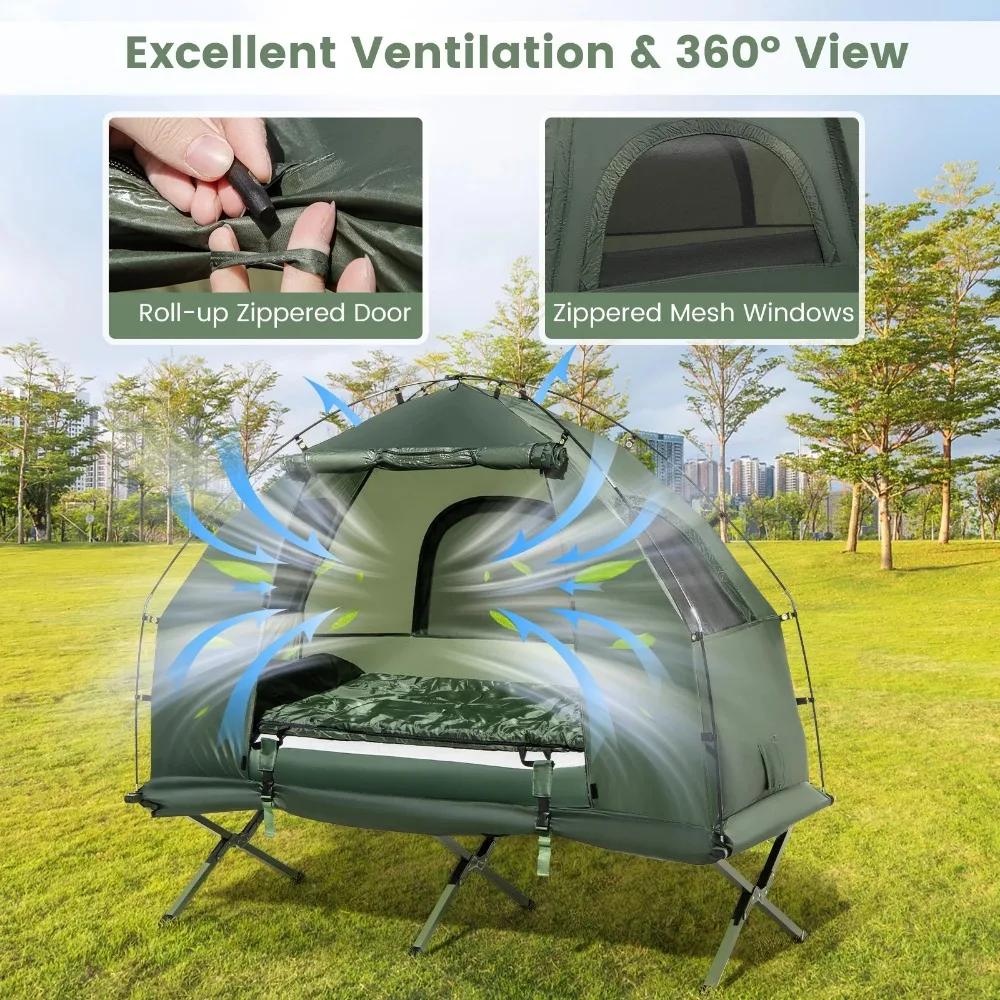
Anchoring systems complete the windproof design through:
- Multiple guy-out points strategically positioned around the tent
- Reinforced attachment points that won’t tear under tension
- Snow valances or snow skirts that create ground-level wind barriers
- Vestibule designs that create buffering zones before the main living space
Durability and Long-Term Value of Windproof Tents
Quality windproof tents represent a significant initial investment, but their long-term value often exceeds that of standard tents when used in challenging conditions. This value proposition stems from both extended lifespan and reduced replacement costs.
The reinforced construction of windproof tents dramatically reduces the stress placed on individual components. When standard tents encounter strong winds, their fabrics often stretch and flap violently, creating wear points that eventually tear. Poles flex beyond their design limits, potentially creating permanent deformation or breakage. These stresses accumulate over time, shortening the tent’s useful life.
In contrast, properly designed windproof tents maintain their structural integrity even in harsh conditions. The reduced movement means:
- Less fabric stress leads to fewer tears and punctures
- Pole systems operate within their design parameters, preventing warping or breakage
- Guy-out points and anchors experience controlled tension rather than sudden jerks
- Zippers and other closures maintain alignment, preventing failure
For serious winter adventurers, mountaineering tents represent an investment in both safety and long-term economy. A quality windproof tent might last for 7-10 years of regular winter use, compared to standard tents that often require replacement after 1-2 seasons in similar conditions.
Practical Setup and Use Advantages in Winter Conditions
Winter camping presents unique challenges during tent setup – when you’re potentially wearing gloves, dealing with limited daylight, and exposed to harsh conditions. Windproof tents designed for winter use incorporate features that simplify this critical process.
Many winter-specific tents feature color-coded components and simplified assembly systems that remain manageable even with gloved hands. Quick-clip attachments or sleeve designs allow for faster setup than complicated pole-threading systems, reducing exposure time during the vulnerable setup phase.
Mastering two-person lightweight tent setup becomes especially important in winter conditions, when efficiency can prevent cold injuries and conserve energy. The best winter tents balance simplicity with strength, allowing rapid deployment when weather conditions deteriorate suddenly.
Interior organization also receives special attention in winter tent design:
- Reinforced storage pockets positioned for easy access while in sleeping bags
- Gear lofts to maximize usable floor space
- Strategic placement of doors and vestibules for gear storage
- Interior loops for hanging wet items to dry
- Reflective elements for better visibility with headlamps
These practical advantages translate directly to more comfortable and safer winter camping experiences, particularly during extended trips where tent livability becomes increasingly important.
Selecting the Right Windproof Tent for Your Snow Adventures
Heavy Duty 4 Season Tent, Mountaineering Tent, Winter Camping Tent
$870.40 Select options This product has multiple variants. The options may be chosen on the product pageCompact Backpacking Tent, Lightweight Backpacking Tent, Waterproof Camping Tent
$335.52 Select options This product has multiple variants. The options may be chosen on the product pageUltralight Backpacking Tent, Ultralight Dome Tent, Winter Camping Tent
Price range: $369.63 through $370.07 Select options This product has multiple variants. The options may be chosen on the product pageCamping Tent with Vestibule, Waterproof Camping Tent
Price range: $407.89 through $479.48 Select options This product has multiple variants. The options may be chosen on the product pageHeavy Duty 4 Season Tent, Ultralight Freestanding Tent, Winter Camping Tent
$3,722.66 Select options This product has multiple variants. The options may be chosen on the product pageBackpacking Tent with Vestibule, Trekking Pole Backpacking Tent, Waterproof Camping Tent
Price range: $271.99 through $519.52 Select options This product has multiple variants. The options may be chosen on the product page
When choosing a windproof tent for winter use, understanding rating systems helps narrow your options. Tent categories typically include:
- 3-season tents: Generally inadequate for significant snow or strong winds
- 3+ season tents: Can handle light snow and moderate winds but lack full winter capabilities
- 4-season tents: Designed specifically for winter conditions with reinforced structures
- Expedition-grade tents: Built for extreme environments like high-altitude mountaineering
Your specific winter activities should guide your selection. Backpackers covering significant distances might prioritize weight despite the strength tradeoffs, while base campers can opt for more robust, spacious options without the same weight concerns.
Size considerations change significantly for winter camping. The general rule is to size up compared to summer requirements – a two-person winter tent often feels appropriate for solo use due to:
- Increased gear storage needs for bulky winter equipment
- Less opportunity to store items outside the tent due to snow
- Need for more interior space for changing clothes and other activities
- Potential for longer periods confined inside during storms
Choosing the ultimate compact shelter for two in winter conditions means balancing these space requirements against the weight and packability considerations for your specific adventure type.
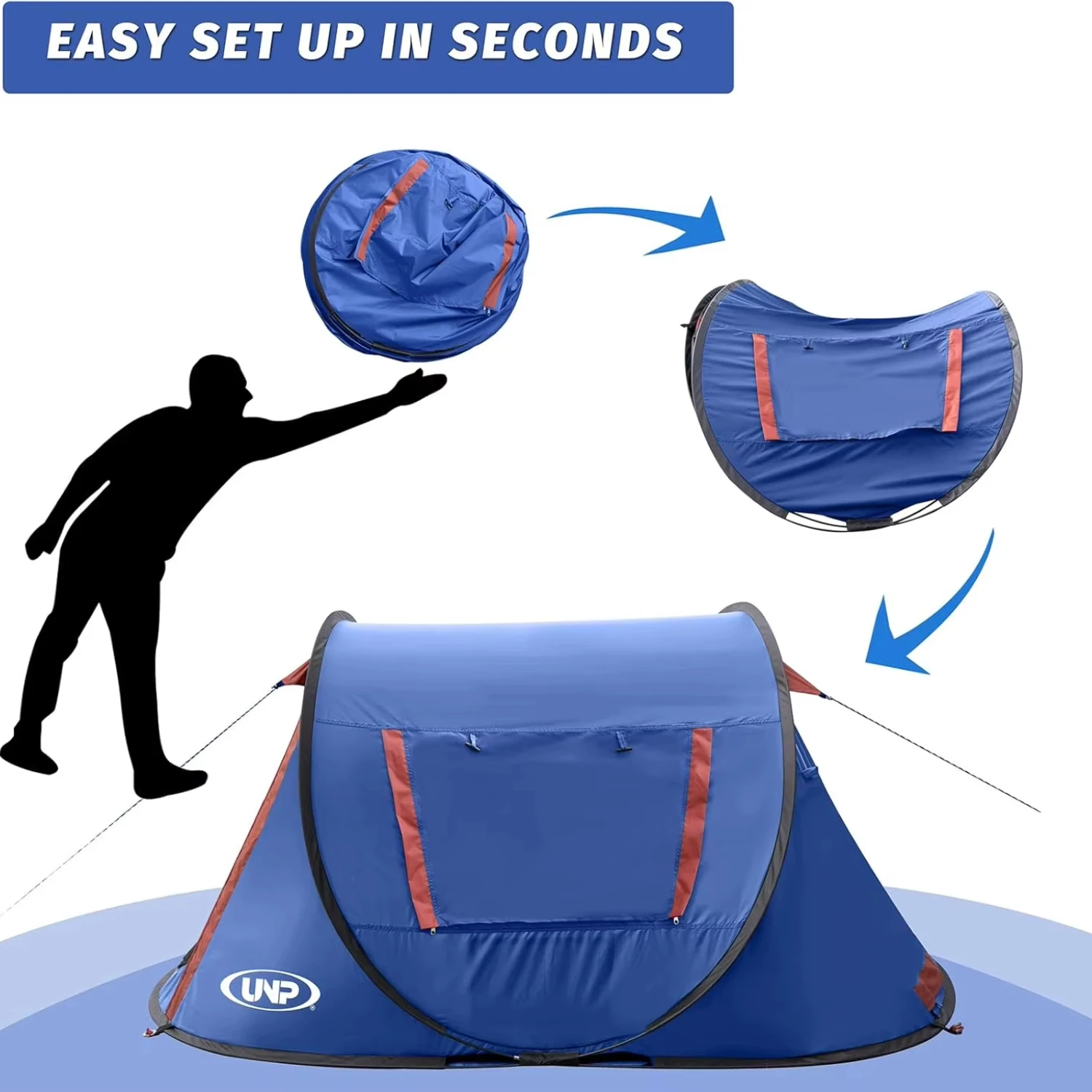
Essential Accessories and Techniques for Maximizing Tent Performance
Even the best windproof tent benefits from complementary accessories and techniques that enhance its performance in winter conditions. These elements create a complete shelter system rather than relying solely on the tent itself.
Key accessories that support winter tent performance include:
- Snow stakes: Longer and broader than standard tent stakes to provide secure anchoring in snow
- Deadman anchors: Objects buried in snow (stuff sacks filled with snow, skis, snowshoes) that provide superior holding power
- Footprints: Custom-sized ground cloths that protect tent floors from abrasion and moisture
- Repair kits: Winter-specific supplies for emergency repairs, including pole splints and fabric patches
Techniques that maximize tent effectiveness in winter conditions include:
- Creating wind barriers using strategically placed snow walls
- Stomping down and compacting the tent site before setup
- Orienting the tent to minimize wind exposure (typically with the narrowest profile facing prevailing winds)
- Proper tensioning of all guy lines to maintain structural integrity
Understanding different camping shelter options for two can also provide alternative approaches when standard tents might not be ideal for specific conditions. Sometimes a combination of shelter types provides the optimal solution for challenging winter environments.
Is a Windproof Tent Worth the Investment for Occasional Winter Campers?
For those who camp in winter conditions only occasionally, the substantial investment in a specialized windproof tent requires careful consideration. The decision ultimately depends on:
- The severity of conditions typically encountered
- Frequency of winter camping trips
- Budget constraints
- Storage space for additional equipment
- Safety requirements for planned activities
Occasional winter campers have several alternatives to purchasing an expedition-grade tent:
- Renting specialized equipment for infrequent trips
- Using hybrid tents with moderate snow and wind capabilities
- Limiting winter camping to less extreme conditions and locations
- Utilizing waterproof camping tents with reinforced guy-out points for moderate winter conditions
Even occasional winter campers should prioritize safety over cost when conditions warrant it. While a high-end windproof tent might seem expensive, it represents essential safety equipment in harsh environments rather than simply a comfort upgrade.
The value proposition changes dramatically based on usage patterns. A tent used for 5-7 winter trips annually over several years offers better return on investment than one used only once or twice, where rental options might be more economical.
Conclusion: Embracing Winter with the Right Shelter
The benefits of windproof tents for snow camping extend far beyond simple comfort – they represent a critical safety system that enables exploration of winter environments with appropriate protection. From life-saving wind resistance to practical features that enhance the camping experience, these specialized shelters create a foundation for successful winter adventures.
While the investment may be significant, the value becomes clear when confronting challenging winter conditions. The right tent transforms potentially dangerous situations into manageable ones, extending your camping season and opening new possibilities for year-round outdoor exploration.
Winter environments demand respect and proper preparation, with shelter selection standing as perhaps the most critical equipment decision. By understanding the specific benefits that windproof tents provide in snow conditions, you can make informed choices that balance performance requirements with practical considerations for your unique adventure style.

